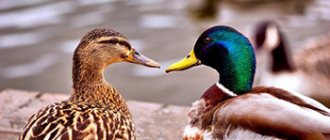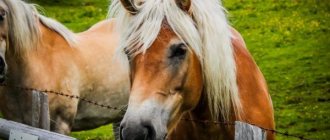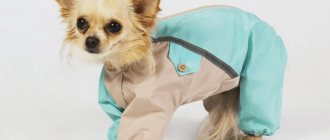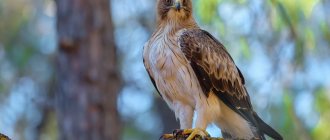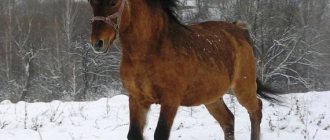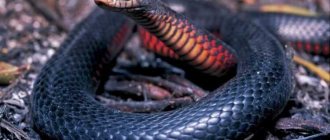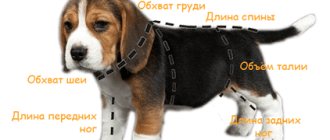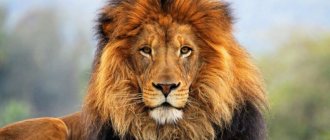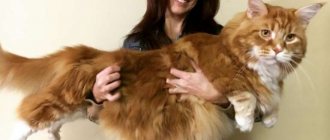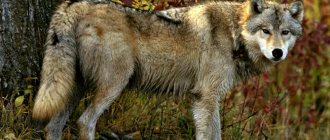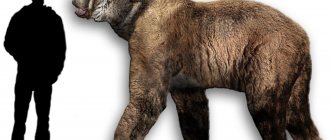Blanket size
A.To calculate the European size of a blanket, you need to measure the length of the horse's back from the withers to the base of the tail in centimeters.
B. To calculate the British American blanket size in inches, or feet and inches, measure the horse from the chest to the back of the thigh.
| Horse body length, cm | Europe, cm | US, inches | UK size, feet and inches |
| 114 | 75 | 45 | 3’9 |
| 129 | 85 | 51 | 4’3 |
| 145 | 95 | 57 | 4’9 |
| 152 | 105 | 60 | 5’0 |
| 165 | 115 | 66 | 5’6 |
| 175 | 125 | 69 | 5’9 |
| 183 | 135 | 72 | 6’0 |
| 183 | 135 | 72 | 6’0 |
| 191 | 140 | 75 | 6’3 |
| 195 | 145 | 78 | 6’6 |
| 206 | 150 | 81 | 6’9 |
| 221 | 165 | 87 | 7’3 |
Girth size
To determine the correct girth length, place a saddle pad on the horse's back, then the saddle. Measure the distance from the middle hole on one side of the girth to the middle hole on the girth on the other side of the saddle. On the horse's chest, the tape should be located approximately one hand's distance from the elbow.
The resulting length corresponds to the length of the girth. All saddles are different sizes and have different girth lengths, so if you are changing a saddle, you may need to re-measure that length to purchase a new girth. The difference between a dressage girth and a girth is approximately 51 cm (20 inches).
Universal girths
| European size, cm | US and UK, inches |
| 80 | 32 |
| 90 | 36 |
| 100 | 40 |
| 110 | 44 |
| 120 | 48 |
| 130 | 52 |
| 140 | 56 |
| 150 | 60 |
Dressage girths
| European size, cm | US and UK, inches |
| 40 | 16 |
| 45 | 18 |
| 50 | 20 |
| 55 | 22 |
| 120 | 48 |
| 60 | 24 |
| 65 | 26 |
| 70 | 28 |
Horse bridle size
Bridle sizes correspond to the sizes shown in the table, however it is never a bad idea to check whether a particular bridle is suitable for your pet, as the shape of the head varies from horse to horse.
When the bridle is placed on the horse's head, a hand should fit between the cheek strap and the horse's jaw, two fingers should fit between the noseband and the horse's nose, and between the forehead and the horse's forehead. The browband should not be too short so as not to pinch the skin behind the horse's ears, and should not be too long so as not to pull the bridle forward.
| A. Neck strap, cm | 54 | 56 | 60 | 65 | 69 | 75 |
| B. Headband from stitch to stitch, cm | 28 | 30 | 32 | 34 | 36 | 38 |
| C. Combination capsule, cm | 60 | 62 | 65 | 72 | 78 | 81 |
| E. Reins, cm | 130 | 130 | 135 | 140 | 145 | 150 |
| F. Cheek strap, cm | 85 | 90 | 95 | 100 | 105 | 110 |
| Headband size | Mini | Shetty | Pony | Cob | Full | Extra Full |
Vitamins for horse growth
Sometimes owners feel that their pets are not growing well. Horses may indeed not gain height that is appropriate for their age and breed. In such cases, it is recommended to add special additives to the feed that stimulate this indicator. Some breeders produce horse calcium or calcium with phosphorus, nutril selenium, Omega-3 complex. The dosage of each is usually indicated on the package.
Generally speaking, vitamin supplements come in injection or granule form and should include:
- vitamins - A, D, H, K, C, group B;
- micro- and macroelements - calcium, magnesium, zinc, selenium, phosphorus and others.
It should also be remembered that a good balanced diet, in particular fresh grass, is also a source of vitamins for the four-legged animal. If there is enough of everything, then vitamins may be needed to maintain the health of the horse and your own peace of mind.
How long is the penis of animals?
Animals were able to develop in all sorts of ways. Turtles, birds, snakes, and bats have a penis somewhat reminiscent of what we have. Mollusks operate with a tentacle that proudly carries the functions of a reproductive organ. Fish have a cunning tube with a hook at the end, etc. Our list includes those who were the luckiest.
Blue whale
Among all marine mammals, the blue whale has the most amazing phallus on the planet. The size of his reproductive instrument exceeds an enchanting 12 meters. Still, it’s significant! If you stack five strong acrobats on top of each other, the animal's organ will still be larger.
The African elephant's "manhood" is S-shaped and reaches 2 meters. It correlates with the body size of this animal as 1:4. If a person possessed such a thing, it would reach 45 cm in length.
The size of the horse's penis is well developed in diameter and has a shocking size of 50-80 cm. The whole thing is crowned with a mushroom-shaped head with a diameter of 12-15 cm. Despite the size, the horse has no bends.
Bear
Male brown and polar bears have a bone at the base of the phallus. The average length of the baculum of the largest land mammal is 18.6 cm. And this does not count the cavernous bodies and membranes that cover it.
Monkeys and gorillas
Even the largest male gorilla cannot boast of an impressive penis size. When ready for combat, its organ does not exceed 2.5-3 cm. However, females are content with this, because the priority for this species is the size of the scrotum with its contents.
Dolphin
These mammals have no bone in their penis, but they have an excellent cone shape like a blue whale. The dolphin's trunk is carefully hidden in the genital fold and falls out as needed to a length of 25-33 cm. The girth is also not bad - 27 cm.
An interesting story about lions begins with the fact that they have spikes on their penises. These things are directed in the opposite direction in the direction of movement and cause the lioness to ovulate. The predator's penis is 28 cm.
Donkey and pony
Nature gave these mammals straight genitals with a mushroom-shaped head and developed thickness. When ready for combat, their trunk hangs merrily just below the donkey’s knee. Some males give out all 45 cm in erection.
Dog
Males have an interesting feature - at the base of the dog’s phallus there is a bone 8-10 cm in size. This cute detail helps the dog to be in almost constant combat readiness. The bone itself is generously covered with cavernous bodies and is equipped with a head with a pointed end. During erection, the dog’s “instrument” increases 5 times compared to rest and often reaches 12 cm.
These fellows have a robust 50-55 cm length. In absolute size of the phallus, they are second only to whales. When it comes to the size of the phallus in relation to the body, walruses are ahead of the rest. It is not without reason that the walrus baculum has become part of a well-known phraseological unit (in other words, a strong folk expression).
Record-breaking horses
Horses with the largest and smallest stature evoke tenderness and admiration. Here are some examples of such achievements:
- The honorary title of the tallest horse on the planet belongs to a Brabancon named Big Jake from America. His height is two meters seventeen centimeters, which was officially recorded in the Guinness Book of Records in 2010. This Belgian gelding weighs just over two and a half tons and has a very friendly character.
- Before Big Jake, the height laurels belonged to a Shire draft horse named Remington from Texas, America. He is 7 centimeters smaller than today's king.
- The absolute record for horse height has not yet been broken and it belonged to a shire named Sampson. He lived at the end of the nineteenth century in the English province of Bedforshire and measured two hundred and twenty centimeters from the ground to the withers. Its weight was more than one and a half tons.
- A shire named Duke now living in Great Britain may soon overtake the current record holder. Now his height is two meters and seven centimeters and he gains about 8 cm every year. The owners do not reveal the secret of his nutrition; We only know that the horse’s diet includes about 10 kg of grain, special varieties of apples, herbal infusions, tea and a hundredweight of water every day.
- The smallest horse in the world is named after the great physicist. A Pinto stallion named Einstein lives in New Hampshire, America, weighs just under three kilograms and is only thirty-five centimeters in height.
Horses have occupied a special place in human life since ancient times. They are incredibly beautiful, graceful and smart. Breeds differ from each other; there are big and small horses. But the love of a four-legged friend for his owner remains unchanged.
Penis in mammals
The mammalian penis consists of a root, a body and a head, which in turn is distinguished by a corolla and a neck of the head. The penis begins on the tuberosity of the ischium of the pelvis with two legs. The legs form a body, which is located in the perineum and private area. On the upper surface of the body of the penis there is a small groove in which nerves, arteries, and veins are located, and on the lower surface there is a groove for the genitourinary canal. The body of the penis ends with the glans, which is equipped with a large number of nerve endings, giving it increased sensitivity. In some animals, the penis forms an S-shaped curve that straightens during erection. The basis of the penis is made up of three cavernous bodies. Two of them, starting from the tuberosities of the ischium, unite to form the body of the penis, the third is the cavernous body of the urethra, surrounding the urogenital canal and smoothly passing into the spongy body of the glans. The cavernous bodies consist of a dense tunica albuginea, forming numerous partitions inside, between which there are large communicating spaces that are heavily filled with arterial blood during sexual arousal. In some animals, at the base of the penis, a genital bone is formed from fibrous tissue, which performs a supporting function (carnivores, pinnipeds, cetaceans). The shape and structure of the glans, the size of the penis, the degree of development of its cavernous and spongy formations in different species of animals have characteristic differences, but in all animals the glans of the penis is in a calm state in the cavity of the preputial sac.
Evolution of male reproductive organs
Syngamy (sexual reproduction) is the result of centuries of evolution. In the process of phylogenesis, the first of all elements of the reproductive system to appear are sex cells - gametes. Already in such primitive forms of life as sponges, eggs and sperm can be distinguished, but they do not yet have special genital organs.
The further development of the reproductive system was the formation of gonads - organs in which gametes develop. At this stage of evolution, the gonads do not have special pathways for the excretion of reproductive products, as a result of which a connection is formed between the reproductive and excretory systems, which can be traced throughout the entire phylogeny.
Further development of the reproductive system led to the appearance of tube-shaped organs through which mature reproductive products move. The connection between the urinary and reproductive systems is preserved. The reproductive tracts in males are the excretory ducts of the kidneys, the Wolffian ducts. Fish and amphibians have such a system, consisting of germ cells, gonads and reproductive tracts. Fertilization can be external or internal (in this case, copulation is carried out using the cloaca, since there are no special copulatory organs). Further complexity of the reproductive system is observed in reptiles and birds. Their testes are located in the body cavity, but the path of the sperm has been lengthened due to the appearance of the epididymis. In its tubules the accumulation and maturation of sperm occurs. For the first time in evolution, the males of some reptile species appear in the cloaca area with special, but still very primitive copulation organs that ensure internal fertilization.
In placental mammals, the reproductive system has become even more complex. The testes and their appendages in most mammals descend from the abdominal cavity and are located in a special testicular sac. The accessory sex glands, the true penis, and the prepuce develop.
Penis development
The external genitalia are formed during the embryonic period and first have the appearance of an indifferent genital eminence located in the midline in front of the cloaca opening. Soon it turns into a genital tubercle, on both sides of which genital folds are formed, and behind - genital ridges. By this time, the cloaca is divided into the rectum and urogenital sinus. The opening of the urogenital sinus is visible between the genital folds. In the male fetus, the genital tubercle lengthens greatly and turns into a penis, the genital folds grow together to form the urogenital canal, and the genital ridges become the scrotum.
How to find out a horse's weight at home?
The formula is as follows: P = V * K. P is the mass of the horse in kg, V is the chest circumference in cm, and K is the calculated coefficient. For heavy horses it is 3.5, for medium ones – 3.1, and for light ones – 2.7.
Interesting materials:
Is it possible to use maps on OGE for geography? Is it possible to change a bank card ahead of time? Is it possible to change a phone number without changing the Tele2 SIM card? Is it possible to change a SIM card to a micro SIM? Is it possible to top up a children's social card? Is it possible to top up an Alfa Bank card through a Sberbank ATM? Is it possible to top up a halva card through a Sberbank ATM? Is it possible to top up an expired card? Is it possible to top up a Sberbank card with cash? Is it possible to top up a social card via the Internet?
Species features of the penis
The stallion's penis is very thick; the head in an erect state is a mushroom-shaped formation (12 - 15 cm in diameter) due to the well-developed cavernous body of the head of venous origin. On the lower surface of the head there is a fossa with a process of the urogenital canal (length 1.5 cm). The length of the penis is 50 - 80 cm, there is no S-shaped bend. The prepuce sac is double, consisting of an outer and an inner prepuce (leaves).
Ruminants
Bull
The bull's penis is thin and long, with a point at the end, and has an S-shaped bend. At the tip of the penis there is a neck of the glans, a process of the urogenital canal and a weakly defined glans. On the neck of the head there is a suture - a ligament twisted to the left. During erection, the diameter of the penis increases slightly, but when the bends are straightened, its length reaches 100 - 150 cm. During ejaculation, the tip of the penis bends and turns around its axis, describing an almost complete circle with a diameter of 12 - 14 cm. The terminal part of the penis is placed in the prepuce the sac located in front of the scrotum, closer to the navel.
Classification by weight and degree of fatness
The weight of a horse is one of the important parameters for classification. There are three main groups:
- Easy. This category includes horses weighing up to 400 kg. There is no minimum value, so the group includes both ponies and racehorses.
- Average. The weight of animals in this category is from 400 to 600 kg.
- Heavy. Giants from this group weigh over 600 kg.
Some sources identify a separate subgroup for horses weighing less than 200 kg.
The weight of an adult animal can change throughout life. This is influenced by the care, nutrition and condition of a particular individual.
Sometimes horses are purposefully put on a diet or fattened, because speed and other productive characteristics depend on weight. Experts distinguish several categories of fatness:
- Unsatisfactory. When you look at such a horse, you feel pity. Protruding ribs, bones of the croup and shoulder blades, lack of subcutaneous fat and lack of muscle indicate poor nutrition and hard work. This condition is caused by poor treatment by the owner, old age or serious illness.
- Sports. Jumping and racing require strong muscles and a toned physique. Training horses have virtually no subcutaneous fat, but they look healthy thanks to their developed muscles. After finishing their sports career, racers often gain fat and move to another category.
- Working. Horses cannot boast of being particularly slender - they are fattened, but the fat does not have time to accumulate due to hard work. This category includes animals engaged in agricultural work, giving rides to tourists and carrying cargo.
- Factory. The horses are intended for breeding, they are well fed, but not allowed to become fat. Stallions are active and mobile, and mares easily bear and give birth to offspring.
- Exhibition. Animals are fattened to participate in shows and exhibitions. Shiny coat and rounded shapes make horses extremely impressive and attractive.
